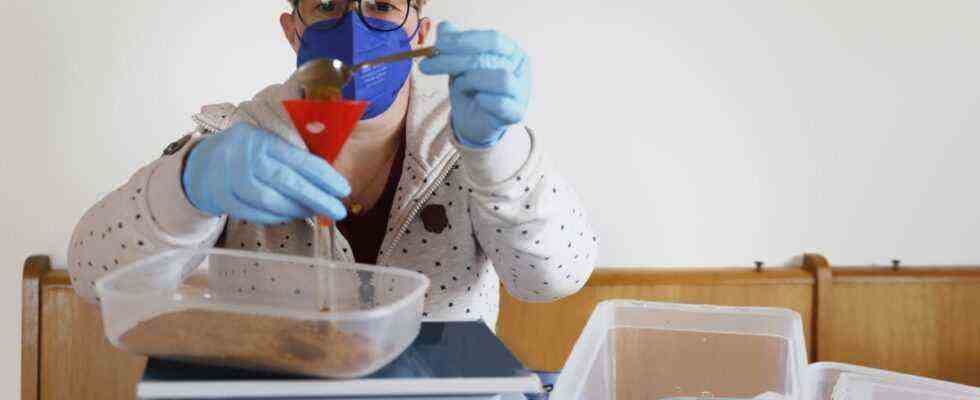Silke Schwertl from Moosburg has dedicated herself to a special hobby. She has been planting chillies in her garden since 2015 and has also been selling them on a small scale for three years. The chilli originally comes from America and, like the potatoes and tomatoes, only came to Europe through Columbus. Although the plant is generally known as a spice, unlike the potato, it is rather untypical for German cuisine.
Because her brother was so enthusiastic about the plant, she started growing chillies
She started growing chillies back then because of her mentally handicapped brother, says Silke Schwertl. He became aware of the plants on television and was so fascinated by them. “He then asked me why I didn’t grow some too.” Silke Schwertl now uses 200 square meters of her garden to grow the hot pods and then sells her own chilli sauces and powder in her own Firechili online shop.
“It’s a lot of fun watching the chillies grow,” she says. In the spring, Schwertl starts sowing the chilli seeds in her chilli workshop. Regardless of which plant you want to grow, it is important that the room temperature is 25 degrees Celsius, she explains. Only then could plants germinate. The cultivation will then be completed at the beginning of March. “I then put the plants on my balcony, there they can sniff some sun.”
Silke Schwertl has recently also sown garlic
In autumn, the chillies are moved to your greenhouse and dried and processed after the harvest. Silke Schwertl’s range currently includes various types of chilli, including jalapeños, Carolina Reaper and Habanero Orange. On their website, Schwertl provides information about their origin, sharpness and the value on the Scoville scale. Using the Scoville unit (English: Scoville Heat Unit or SHU), the degree of spiciness of a chili can be determined.
She recently also sown garlic and would also like to try growing mustard, she says. “But I’m really curious to make a chilli sauce out of black tomatoes, and I’ll try that for the first time this year.” Silke Schwertl experiments and tries to make existing, industrially manufactured products as organic as possible. For example, she also makes her own fertilizer based on nettle lye.
“Everything that the garden gives me now goes into the fertilizer”
It took her four to five years to find the right recipe for the fertilizer. Schwertl works as a geriatric nurse, has often received helpful tips from patients and used them in her garden. “Everything that the garden gives me now goes into the fertilizer,” said Schwertl. It wasn’t easy, but she invented a working fertilizer for almost every plant.
She is aware of the environmental pollution caused by fertilizers and therefore believes it is better to produce everything that is possible organically. “Everyone has to do a little something to help the environment,” she says. She also imagines that her organically fertilized tomatoes taste better than those from the discounter. Silke Schwertl is also considering, as she says, applying for an organic seal. For this purpose, soil samples are taken and examined for chemicals. However, there will be no trace of this in her earth, says Silke Schwertl with conviction.

